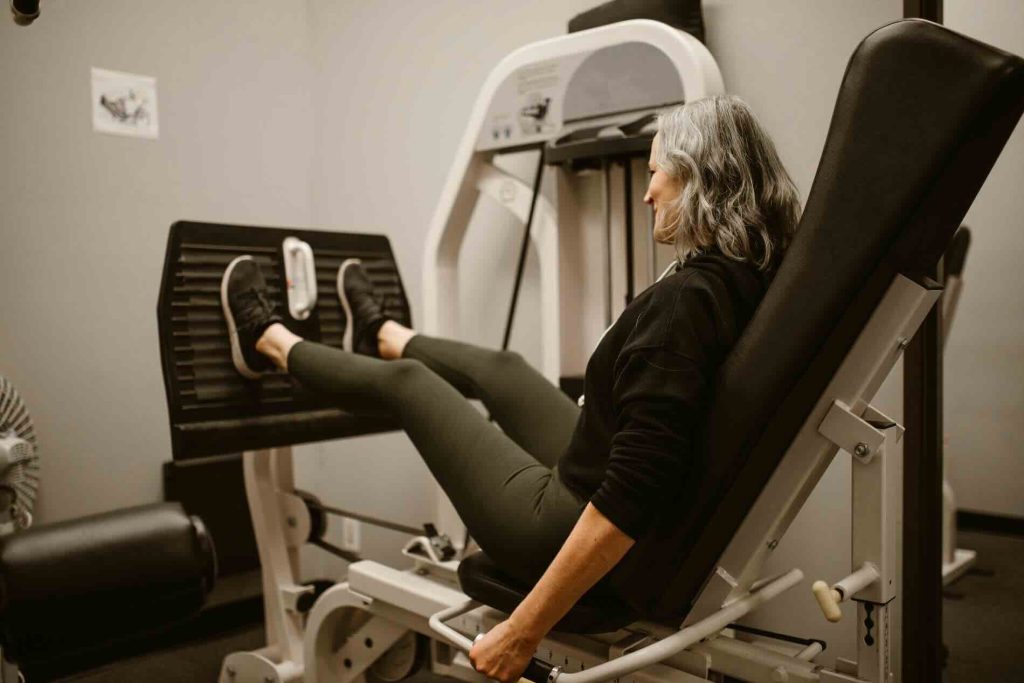You hit the gym with good intentions. You warm up, lift smart, and follow your workout program religiously. But what if some of the exercises you’re doing—even with perfect form—are silently sabotaging your joints, wrecking your posture, or increasing your injury risk?
It’s not just about how you move—it’s also about what you choose to do in the first place. Some exercises are simply biomechanical nightmares, no matter how strong you are or how clean your technique is. Here’s a look at three common movements that might be doing more damage than good—and what to do instead.
1. Machine-Assisted Leg Press: Bad for Backs and Knees
Let’s be real—leg presses look and feel impressive. You sit down, stack the weights, and push out reps like a machine. But that’s part of the problem—you are using a machine, and that often means unnatural movement patterns.
When you load up the leg press and lock your knees or round your lower back, you’re putting massive compressive force on your spine. Plus, the seated position removes core activation and places all that pressure directly on your lumbar discs and knees—especially when your feet are placed too low on the platform.
Better alternatives:
- Barbell Back Squats: Engage your core and posterior chain while promoting full-body balance and control.
- Bulgarian Split Squats: A powerful single-leg movement that improves stability and strengthens the glutes, quads, and hamstrings.
- Hamstring Curls & Leg Extensions: Use these to isolate muscle groups and complement compound lifts—not replace them.
Pro tip: If you’re recovering from injury or working around limitations, a leg press isn’t always off-limits—but use light weight, stay controlled, and skip the ego-lifting.
2. Behind-the-Neck Lat Pulldown: Risky for Shoulder Joints
If your goal is a bigger, wider back, lat pulldowns are a staple. But pulling the bar behind your head is an old-school mistake that can easily lead to rotator cuff injuries and cervical spine strain.
Why? Because this version forces your shoulders into extreme external rotation—an unnatural position under load. It also pushes your neck forward, increasing the risk of spinal misalignment and muscle strain.
The same caution applies to behind-the-neck shoulder presses. If your mobility doesn’t allow for that range of motion, you’re setting yourself up for wear and tear—even if it doesn’t hurt right away.
Safer alternatives:
- Standard Lat Pulldown (in front of the chest): Targets the same muscles with better biomechanics.
- Pull-Ups: Still one of the most effective back-builders—just keep it strict.
- Dumbbell Shoulder Press: Allows natural arm path and accommodates your shoulder mobility.
Expert insight: If your form feels forced or your joints feel “off,” it’s your body’s way of saying: try a different variation. Mobility first, muscle later.
3. Bench Dips: Shoulder Damage in Disguise
Dips are often hailed as a go-to bodyweight move for triceps and chest—especially if you’re stuck without access to equipment. But if you’re doing bench dips, you might want to reconsider.
The problem lies in the shoulder position. Placing your hands behind your body and dipping down forces your shoulders into excessive internal rotation, especially when you lower deeply. This puts a dangerous strain on the anterior shoulder capsule and can lead to impingement or even tears over time.
Why bench dips are especially risky:
- The bench setup encourages poor posture.
- Your palms face backward, which twists the shoulder joint awkwardly.
- You’re balancing your body weight in a vulnerable position with limited support.
Smarter alternatives:
- Parallel Bar Dips: Done with proper form, these are safer and more effective.
- Close-Grip Push-Ups: Ideal for targeting triceps with minimal shoulder stress.
- Cable Triceps Pushdowns: Give you full control over angle and resistance.
Note: If you’re dealing with poor posture or a history of shoulder pain, it’s best to avoid dips altogether unless guided by a coach or physical therapist.
Smart Training Isn’t Just About Going Hard—It’s About Training Right
The gym should build you up—not break you down. If an exercise feels awkward, causes joint discomfort, or doesn’t align with your mobility and structure, don’t force it just because it’s “popular.” Fitness isn’t one-size-fits-all, and longevity beats short-term gains every time.
Listen to your body. Challenge yourself intelligently. And if you’re ever in doubt, talk to a certified trainer or movement specialist before risking long-term injury for short-term results.
Want a list of safe, functional exercises tailored to your body type and goals? Let me know—I’ll build a custom guide just for you.
- How Automated Dispensing Cabinets (ADCs) revolutionized point-of-care medication administration? - November 23, 2021
- How to Select the Best and Most Affordable Fitness Tools - October 31, 2021
- What is Causing the Trend of Nursing Turnover and How to Stop It - August 24, 2021


